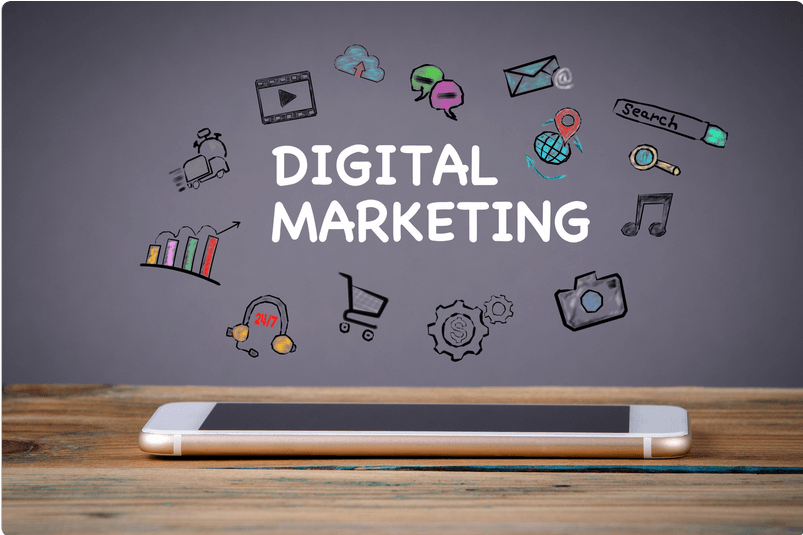Unraveling the Enigma: Apple Digital Marketing Powerhouse
In the pantheon of tech giants, Apple has secured an unshakeable pedestal synonymous with innovation, design excellence, and strategic marketing genius. A deep dive into Apple’s digital marketing strategy reveals a sophisticated and purposeful design that has secured the brand’s unrivaled position in the tech industry.
Harnessing the Power of Minimalism in Branding
Remarkably, Apple’s digital marketing strategy hinges upon the principle of minimalism. The brilliance of this approach lies in the subtle art of saying more with less. Apple’s minimalistic branding permeates every aspect of its marketing – from simplistic logo design to sparse product ads – creating an atmosphere of refinement and elite class.
Their product-centric campaigns strip away the unnecessary, focusing on product features and aesthetics. This tactic implores consumers to envisage the myriad ways these products can enhance their lives. With its relentless pursuit of simplicity, Apple has cemented an image of being a sophisticated, user-friendly, and quality-oriented brand.
Mastering the Art of Storytelling
Not merely satisfied with showcasing product specifications, Apple has elevated the craft of storytelling within digital marketing. Their ads, showcasing emotive narratives intertwined with their products, are powerful vehicles to resonate with audiences personally.
Each Apple product is positioned as a conduit for creativity, efficiency, and lifestyle enhancement, making the ownership of an Apple product more of a symbolic identity. Emotional narratives in their marketing content have cultivated a genuine brand loyalty unrivaled in the tech industry.
Utilizing Influencer Marketing to a T
Apple has capitalized on the pervasive influence of celebrities and well-known figures within the digital sphere. These collaborations have successfully enhanced brand appeal, demonstrated the applicability of Apple products in various industries, and reinforced the brand’s cultural relevance. Often subtly executed, these partnerships have bolstered Apple’s visibility and prestige.
Ingenious Use of Social Media Platforms
Despite maintaining a relatively reserved social media presence, Apple’s strategy in this sphere is commendable. Leveraging user-generated content on platforms such as Instagram, Apple has managed to build a vibrant, engaged online community that organically showcases the versatility and appeal of its products.
Their annual “Shot on iPhone” campaign is a testament to their ingenious user engagement strategy, transforming everyday Apple users into brand ambassadors and contributing to a compelling library of user-generated content.
Perfecting the Product Launch Spectacle
Apple has transformed product launches into eagerly anticipated events marked by suspense, excitement, and worldwide attention. Each product reveal is a testament to their intricate narrative weaving, merging product innovation with the allure of discovery.
Their innovative approach to product launches, combining the elements of a theatrical spectacle with the thrill of technological advancement, has given Apple an edge, creating ripples in the digital space every time.
Embracing Augmented Reality: Pioneering Futuristic Marketing
Apple’s foray into augmented reality marketing showcases its constant push toward innovation. Their AR campaigns enable customers to experience products in a novel, immersive manner, further driving their stake as a leader in leveraging cutting-edge technology in marketing.
Conclusion: Lessons from Apple’s Digital Marketing Masterclass
Apple’s triumph in the tech industry is no happy accident. It’s the fruit of meticulously crafted and executed digital marketing strategies. Their masterful blend of minimalistic branding, compelling storytelling, astute influencer collaborations, and innovative use of digital platforms offers valuable lessons for businesses seeking to elevate their digital marketing game.
Apple’s sustained success is a testament to its understanding of the evolving digital marketing landscape, attention to detail, and commitment to maintaining a resonant brand identity. Their digital marketing prowess underscores the powerful synergy of technology, strategy, and narrative, setting a gold standard for tech companies worldwide.
FAQs
How does Apple use digital marketing?
Apple, one of the world’s leading technology companies, utilizes various digital marketing strategies to promote its products and engage with its audience. Here are some ways Apple employs digital marketing:
- Online Advertising: Apple employs advertising across various digital platforms to reach its target audience. This includes display ads, video ads, and sponsored content on websites, apps, and social media platforms. Apple leverages precise targeting options to ensure its ads are shown to users likely to be interested in its products.
- Search Engine Marketing (SEM): Apple utilizes search engine marketing, mainly through Google Ads, to display its ads prominently in search engine results when users search for relevant keywords. By bidding on keywords related to its products, Apple ensures visibility and attracts potential customers.
- Social Media Marketing (SMM): Apple maintains a strong presence on social media platforms like Facebook, Twitter, Instagram, and YouTube. The company uses these platforms to showcase its products, share engaging content, run advertising campaigns, and interact with its audience. Apple’s social media presence helps build brand loyalty and generate buzz around new product launches.
- Content Marketing: Apple leverages content marketing to provide valuable and informative content to its audience. This includes product tutorials, how-to guides, user stories, and behind-the-scenes videos. Apple’s content marketing efforts aim to educate and inspire its customers, reinforcing its brand image as an innovative and user-focused company.
- Influencer Marketing: Apple collaborates with influencers, celebrities, and popular content creators to promote its products. These influencers often share their experiences and endorsements of Apple products with their followers, helping to reach a wider audience and create social proof for Apple’s brand.
- Apple Store Experience: While not strictly digital marketing, Apple’s physical retail stores provide a unique experience that complements its digital efforts. Apple Stores is a physical manifestation of the brand, allowing customers to interact with products, receive personalized assistance, and participate in workshops and events. The Apple Store experience reinforces Apple’s digital marketing efforts by providing a seamless and immersive customer journey.
- Email Marketing: Apple utilizes email marketing to communicate with its customers, informing them about new product releases, updates, special offers, and events. Apple leverages its extensive customer database to deliver personalized and targeted email campaigns, ensuring relevant content reaches the right audience.
Apple integrates digital marketing strategies to create a cohesive and engaging brand experience. By leveraging online advertising, search engine marketing, social media, content marketing, influencer partnerships, and email marketing, Apple effectively promotes its products, builds brand loyalty, and maintains a strong connection with its customers.
Does Apple advertise online?
Yes, Apple advertises online as part of its marketing strategy. Apple utilizes online advertising across various digital platforms to promote its products and reach its target audience. Here are some examples of how Apple advertises online:
- Display Ads: Apple runs display advertisements on websites and apps. These ads can appear as banners, sidebars, or interstitials. Apple’s display ads often showcase its latest products, highlight key features, and evoke emotions to capture the attention of potential customers.
- Video Ads: Apple leverages video advertising on platforms like YouTube and other video-sharing websites. These ads can be in the form of pre-roll ads, mid-roll ads, or sponsored content. Apple’s video ads often feature visually stunning imagery, product demonstrations, and compelling storytelling to engage viewers and create an emotional connection.
- Social Media Advertising: Apple runs targeted advertising campaigns on popular social media platforms like Facebook, Instagram, Twitter, and LinkedIn. These ads can appear in users’ newsfeeds, stories, or as sponsored content. Apple’s social media ads showcase its products, highlight unique features, and encourage user engagement.
- Search Engine Marketing: Apple utilizes search engine marketing (SEM) by running paid search ads through platforms like Google Ads. When users search for relevant keywords related to Apple’s products or services, Apple’s ads can appear prominently in the search engine results pages (SERPs), increasing visibility and attracting potential customers.
- App Store Ads: Apple advertises within its ecosystem, including the App Store. Apple allows developers to run app install or app promotion ads within the App Store, helping them gain visibility and drive downloads. This form of advertising will enable Apple to promote featured apps and incentivizes developers to invest in upgrading their apps.
- Remarketing: Apple employs remarketing techniques to reach users who have previously interacted with its website or shown interest in its products. Through cookies and tracking pixels, Apple can display targeted ads to these users across various websites and platforms, reminding them of its products and encouraging them to purchase.
Apple’s online advertising efforts focus on creating visually appealing and engaging content that aligns with its brand identity. These advertisements generate awareness, drive product consideration, and ultimately lead to conversions and sales.





